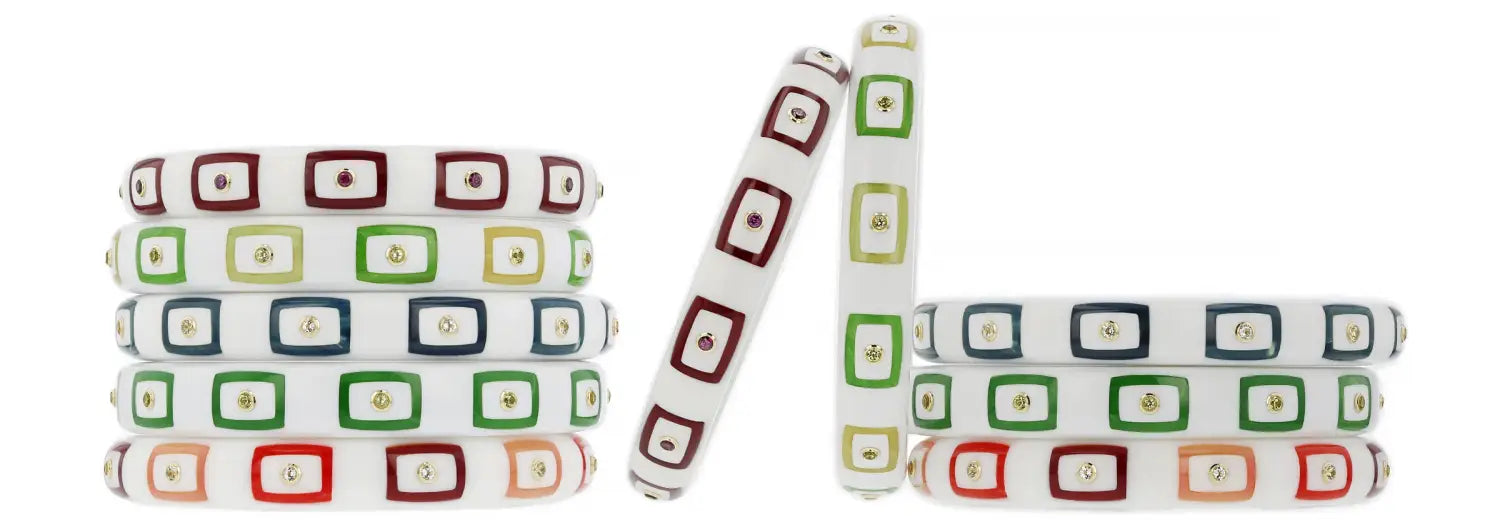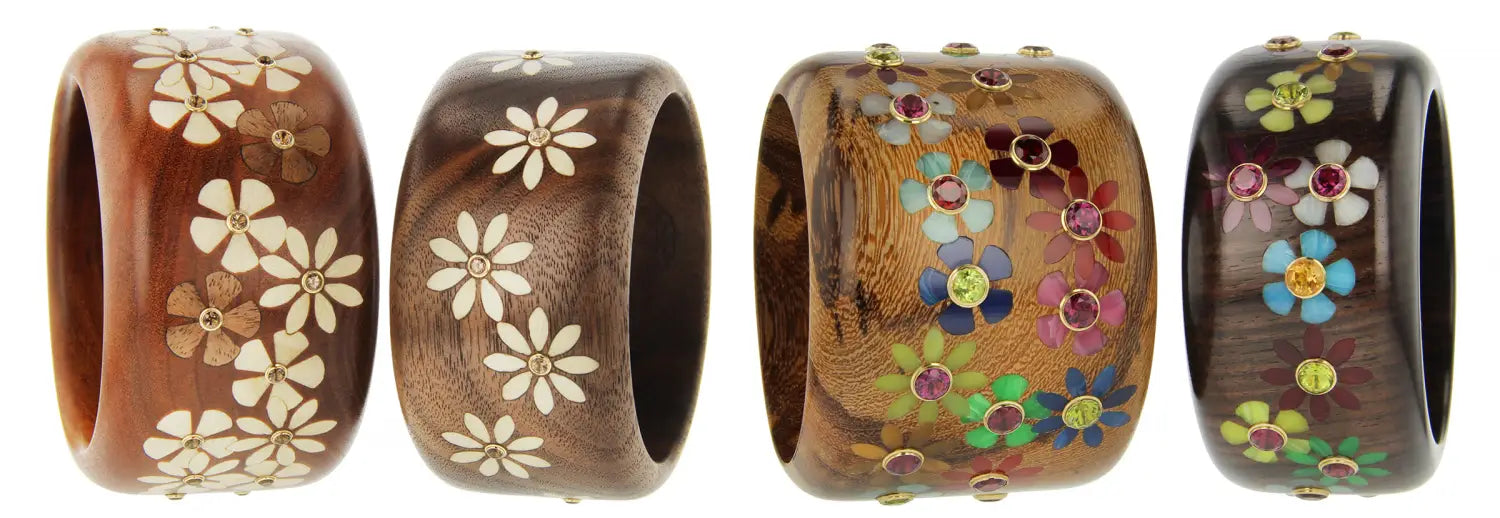The Materials We Use

POLYOXYBENZYLMETHYLENGLYCOLANHYDRIDE A.K.A. BAKELITE
Invented by Leo Baekeland in New York in 1907, Bakelite was the first completely synthetic plastic material. It contained no petroleum or plant-derived ingredients. The development of Bakelite changed the course of mankind and the planet. Unfortunately, all the changes have not been good. Some of the properties that made Bakelite so remarkable over 100 years ago have come to haunt us today. Bakelite does not melt and cannot be recycled like most petroleum plastics. Its once-desirable durability becomes a liability when it enters the waste stream.
MARK DAVIS BAKELITE
The vintage Bakelite used in our products is an example of recycling in its purest form. By repurposing material that cannot be recycled, we prevent it from entering the waste stream in the first place. By creatively using it like a precious material, we elevate it to a point of spectacular beauty and high desirability.

Mark Davis bakelite jewels are closer to postmodern “ivory” masterpieces than to common plastic jewelry. The exacting techniques of working the bakelite are similar to those employed for natural ivory, but without ivory’s associated ecological devastation. In addition, the bakelite offers a range of colors and patterns that are unique and remarkable in their own right.
For the sake of simplicity, we use the term “bakelite” with a lowercase “b” as a blanket term to identify a wide range of vintage thermosetting resins. These include Bakelite, Catalin, Prystal, Beetle, Galalith and others. All of the bakelite we use is vintage material. We literally search the world in our quest for material that is appropriate for our fine jewelry. We cannibalize material from wherever we find it, including old clocks, jukeboxes, game pieces, lamps and billiard balls.
Thermosetting resins cannot be melted and reformed: We process the material by hand with labor-intensive techniques. Every piece is individually subjected to a combination of sawing, carving, filing, sanding and polishing. All work is done by hand in our South Carolina workshop.
MARK DAVIS WOOD
The woods used in Mark Davis jewelry are selected for their natural beauty, durability, and sustainability. We use woods from managed resources or naturally fallen trees, as well as wood reclaimed from architectural demolition. All woods are presented in their natural colors: We do not dye, stain, or paint them. Depending on the physical characteristics of the type of wood used, the pieces are finished with a natural wax or a more durable lacquer.

MARK DAVIS GOLD AND PLATINUM
We use only recycled eighteen karat gold and platinum in our jewelry. All of our precious metals come from suppliers that are as committed to environmental stewardship as we are.

OTHER NOVEL MATERIALS
We are curious by nature and revel in experimenting with new and often unexpected materials. You may see Mark Davis items constructed of materials that you are not familiar with. If you have any questions about the materials used in our products, please contact us for assistance. We will be happy to answer any questions that you may have.
Please visit the sustainability section of our website to learn more about our commitment to environmental responsibility and how our materials form a core part of that commitment.

